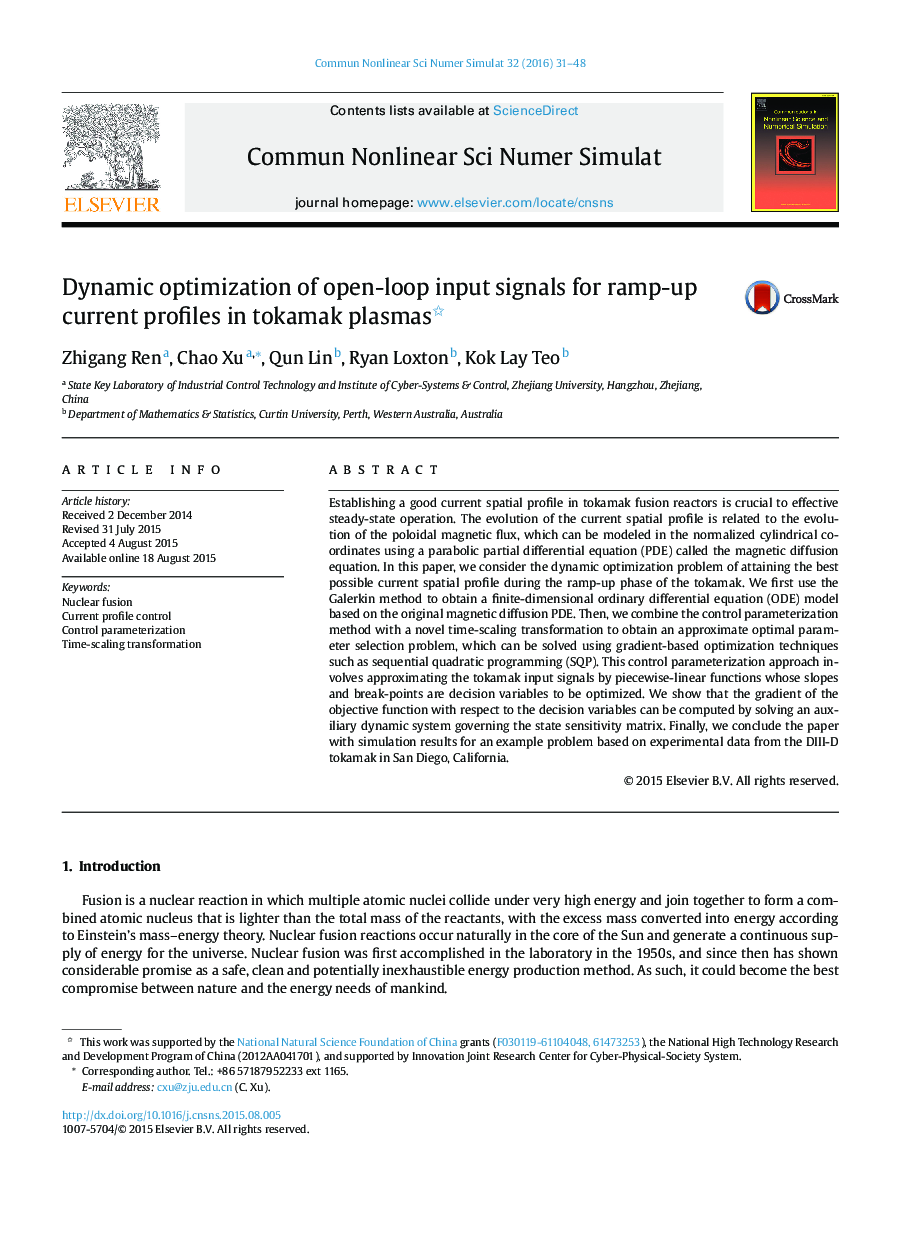| Article ID | Journal | Published Year | Pages | File Type |
|---|---|---|---|---|
| 758030 | Communications in Nonlinear Science and Numerical Simulation | 2016 | 18 Pages |
•A dynamic optimization formulation for minimizing tracking error in tokamak plasmas.•A new computational method for solving the dynamic optimization problem.•Numerical results using data from the D-III tokamak in San Diego.
Establishing a good current spatial profile in tokamak fusion reactors is crucial to effective steady-state operation. The evolution of the current spatial profile is related to the evolution of the poloidal magnetic flux, which can be modeled in the normalized cylindrical coordinates using a parabolic partial differential equation (PDE) called the magnetic diffusion equation. In this paper, we consider the dynamic optimization problem of attaining the best possible current spatial profile during the ramp-up phase of the tokamak. We first use the Galerkin method to obtain a finite-dimensional ordinary differential equation (ODE) model based on the original magnetic diffusion PDE. Then, we combine the control parameterization method with a novel time-scaling transformation to obtain an approximate optimal parameter selection problem, which can be solved using gradient-based optimization techniques such as sequential quadratic programming (SQP). This control parameterization approach involves approximating the tokamak input signals by piecewise-linear functions whose slopes and break-points are decision variables to be optimized. We show that the gradient of the objective function with respect to the decision variables can be computed by solving an auxiliary dynamic system governing the state sensitivity matrix. Finally, we conclude the paper with simulation results for an example problem based on experimental data from the DIII-D tokamak in San Diego, California.
